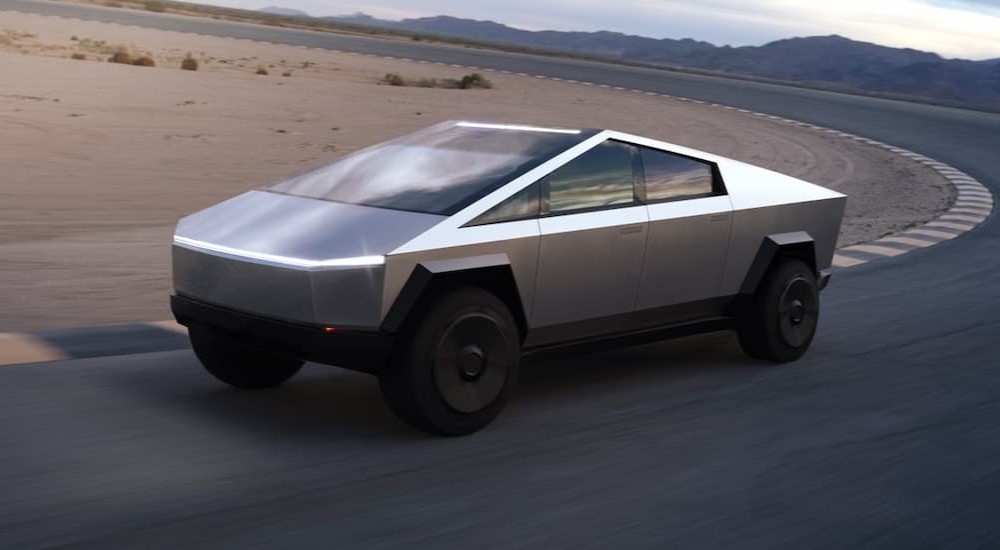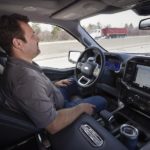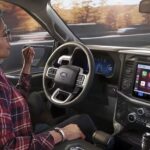Hands-free driving has long been the holy grail of automotive technology. Once reserved for sci-fi films, television, and novels, hands-free driving tech is becoming a reality, with some of today’s largest and most trusted automakers developing their own semi-autonomous driving systems. Automated driver-assistance systems (ADAS) like adaptive cruise control, lane-centering, and automatic emergency braking have steadily made their way into our vehicles over the past decade. Still, the new breed of hands-free driving systems that combine all of these features and more into one tidy package holds the potential to change the way drivers interact with their vehicles. From Ford’s BlueCruise and GM’s Super Cruise to Tesla’s Autopilot and countless other systems across the markets, hands-free autonomous tech is finally coming into its own. But can it actually improve driving? Let’s dive into some of the benefits of contemporary hands-free systems, examine the downsides, and explore some current offerings to determine whether this tech is really all it’s cracked up to be.
Benefits of Hands-Free Driving
There’s no arguing with the safety-related benefits of hands-free driving technology. While we’ve all heard a few horror stories of self-driving vehicles gone awry, the truth is that these incidents are few and far between. People are another story altogether, with human error leading to almost 35,000 auto-related deaths every year, according to the National Highway Traffic Safety Administration. Features as simple as lane-keeping assist and adaptive cruise control can have a major impact on such incidents, and the case is even more compelling when it comes to the next generation of hands-free driving tech like Super Cruise that’s now hitting the market. Some studies have suggested that fully automated vehicles could reduce auto accidents by as much as 90 percent and create a safer road for everyone involved.
Hands-free driving systems are particularly helpful for drivers who might otherwise find life behind the wheel a little difficult. Older drivers or those with certain disabilities can greatly benefit from hand-free driving technology. It can keep them centered on the road, automatically change lanes, and handle most acceleration and braking duties. As hands-free driving technology advances, such drivers could enjoy the freedom and mobility important in maintaining employment, visiting family, or seeking medical care.

Aside from the enhanced convenience and safety, one of the most substantial benefits of hands-free driving technology might be its impact on your wallet. Hands-free driving tech like adaptive cruise control can help to reduce overall fuel consumption by maintaining a steady speed and helping drivers avoid the sort of abrupt stopping and starting that can do a number on your gas tank. Hands-free and autonomous driving systems have been shown to reduce a driver’s fuel costs by between four and 10 percent, saving up to 3.1 billion gallons of gas annually. That efficiency also has substantial environmental benefits, reducing greenhouse gas emissions and providing a greener driving experience.
People tend to get a little inattentive behind the wheel, letting their guard down and committing simple errors that can lead to major accidents. This is especially true on longer road trips and night drives when fatigue or boredom can occur. Today’s hands-free driving systems can handle some of the more mundane aspects of driving, but they’re also designed with features that measure a driver’s attentiveness, track eye movements, detect whether or not your hands are on the wheel, and deliver alerts as needed. As the technology evolves, these failsafes will probably be phased out, allowing drivers to catch up on some work, play a game with the kids, or simply sit back, relax, and enjoy the ride. This level of hands-free sophistication is still a ways off, but it’s fun to imagine how you might spend the time currently dedicated to piloting your vehicle.
Hands-free driving systems might not end traffic as we know it, but they could significantly impact congestion. Allowing a hands-free system to take the wheel can keep vehicles at a nice, even pace and go a long way towards preventing the traffic jams and bottlenecks that can turn your daily commute into a frustrating slog. As technology advances, self-driving vehicles will even be able to potentially communicate with one another using a Vehicle-To-Everything (V2X) feature. If a centralized traffic system detected a particular slowdown along one route, it could start directing vehicles along another path, leveraging AI to make traffic jams rare.
Best and Worst Hands-Free Driving Systems
Hands-free driving systems might be making our vehicles more convenient than ever, but the technology’s effectiveness can vary between different makes and models. Some manufacturers have significantly outpaced others when it comes to their hands-free driving systems, which is why it’s so important to do some thorough research before investing in your next car, truck, or SUV. How do today’s hands-free systems stack up? The technology is a little too new for any consensus, but an in-depth Consumer Reports study provides some handy information.
The nonprofit consumer organization examined 17 current hands-free systems, rating each offering on categories including capabilities and performance, driver engagement, ease of use, unresponsive driver features, and clarity of when it’s safe to engage the system. Most systems delivered mixed results, but there was one clear winner in Ford/Lincoln’s BlueCruise technology. The hands-free system led the field with a total score of 84/100, besting the second-place finisher in GM’s Super Cruise by nine points. BlueCruise earned a 9/10 in capabilities and performance, driver engagement, and clarity while delivering a 6/10 in the other two categories. GM’s Super Cruise had a strong showing at 75/100 but was dinged with a 4/10 in the ease of use category.
Mercedes, BMW, Toyota/Lexus, Nissan/Infiniti, Volkswagen/Audi, and Tesla all scored at least 8/10 in capabilities and performance to keep their scores above 60/100, but some other brands didn’t fare quite as well. Newcomers Lucid and Rivian, both 59/100, earned threes and fours in the driver engagement and clarity categories, while Hyundai/Kia/Genesis, also earning 59/100, posted a dismal 1/10 for its unresponsive driver feature. Honda/Acura did almost as poorly in that category and lagged behind in a few other areas for a 58/100. Jaguar/Land Rover and Volvo/Polestar didn’t live up to their luxurious reputations with a 53/100, and both disappointed with a 2/10 in the clarity category. Bringing up last place was Hyundai/Kia/Genesis, which earned just 47 points in the Consumer Reports study. The brand’s Highway Driving Assist Technology did earn a 7/10 for ease of use and a 6/10 for capabilities and performance, but it wasn’t enough to offset a 4/10 for driver engagement, a 3/10 for clarity, and a 2/10 for its unresponsive driver feature.

There’s no stopping the steady expansion of hands-free driving technology, but does it actually improve the driving experience and make for safer roads? It might be a little early to deliver a decisive verdict, but it’s hard to argue against some of the obvious safety, efficiency, accessibility, and traffic-related benefits. Hands-free driving tech certainly comes with some downsides. Glitches are rare, but they do happen, and the technology is still limited to certain makes and models and often treated as an optional add-on or subscription-based service. The most concerning aspect of hands-free driving technology is its tendency to lead to complacency and inattention behind the wheel. With a hands-free driving system that handles steering, braking, acceleration, and even lane-changing duties, drivers might slack off and give in to some of their worst impulses. Whether texting, scrolling, eating, or even applying makeup on your way to work, hands-free driving tech can make the driving experience a little too easy. Most automakers have engineered around this problem with their driver attention features, but as long as there’s an opportunity to slack off, drivers will find a way.
These drawbacks aren’t to be ignored, but on the whole, hands-free driving tech is a boon to the driving public, pedestrians, and anyone else who shares the road. From improving accessibility and safety for older or handicapped drivers to maximizing efficiency, reducing traffic, and slashing carbon emissions, hands-free driving systems stand to revolutionize the driving experience as we know it. Some drivers might have a hard time letting go and allowing a computer to commandeer a task they’ve been performing without incident for decades, but like cruise control, blind-spot monitors, and parking sensors, hands-free driving technology is simply too convenient to ignore. Once upon a time, some of these systems were treated with suspicion, but they’ve proven their worth and become an invaluable part of our modern vehicles. There’s no putting the cat back in the bag when it comes to hands-free driving. While the tech still has a ways to go before it can match the lofty expectations set by TV and film, it’s getting better with every passing year.




